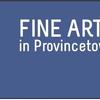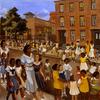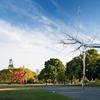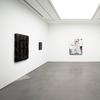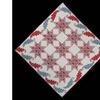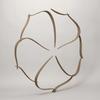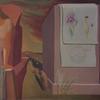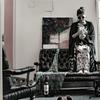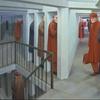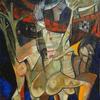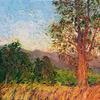America, Feast or Folly, an exhibition by Los Angeles-based sculptor Sienna DeGovia, with photographer Renée Anjanette, at Klowden Mann
- CULVER CITY, California
- /
- July 23, 2019
Klowden Mann presents America, Feast or Folly, an exhibition by Los Angeles-based sculptor Sienna DeGovia, in collaboration with photographer Renée Anjanette. The exhibition looks at the United States’ continuing cycle of consumption/desire, white privilege and fragility, and spectacle as it relates to recent mass shootings. DeGovia and Anjanette position media representations of commercialized ‘American’ identity with and against sculptural work referencing a selection of the most violent mass shootings of the last several years in the United States that are disproportionately perpetuated by young, white men. The exhibition will be on view from June 22nd through July 27th, 2019.
The commodification of art objects while being a boon to artists and gallerists, has dampened many artists’ desires to visually unpack in truly meaningful ways some of the most disruptive socio-cultural trends. DeGovia and Anjanette are courageous, bringing to the forefront the visual language of violence and white privilege with the good faith of artists who earn their livelihoods outside of the gallery system. They also open discussions about white fragility and guilt, and the problematic provocation of displaying white innocence as critique for—or answer to—white supremacy.
Presenting imagery for discussion rather than a direct causal connection or a proposed solution, the artists look at the constant desire-creation at work in the advertising industry—an industry in which they both participate professionally, and whose guiding business principles necessitate presenting desire as something that can never be fulfilled, and a consumption that can never be satisfied. There must always be something new to want, to advertise, to be denied—and this relationship to eruptions of violence as manifested in mass shootings is richly made through the juxtaposition of kinetic sculptures and caricatures that signify the cycles of commercial and real brutality, as well as the fragile yet resilient, enduring identities of its victims.
Sienna DeGovia’s assembled sculptural works, often constructed of ceramic and metal with geared moving parts, represent five of the most historically significant and deadly mass shootings of the last decade in the United States: the Sikh Temple of Wisconsin shooting in Oak Cree, Wisconsin, August 5th, 2012; Sandy Hook Elementary School in Newtown, Connecticut, December 14th, 2012; the Emanuel African Methodist Episcopal Church in Charleston, South Carolina, June 17th, 2015; Pulse nightclub in Orlando, Florida, June 12, 2016; The Tree of Life Synagogue in Pittsburg, Pennsylvania, October 27, 2018. American Game depicts ceramic human figures, stars and other symbols of Americana painted to resemble candy coating. The pieces move up and down on iron rods, providing the viewer with a sense of the inescapable connection to consumer culture and its harms. Orlando is constructed of a pulsating light, a haunting reminder of a disco ball as radical love and communal celebration, and the flashing strobe light of emergency vehicles called to a horrific scene of carnage that was the intended aftermath of a deranged shooter. The piece rings a bell periodically in the gallery space—49 times for each of the victims of the Pulse shooting.
DeGovia’s genuine desire to hold a mirror to systemic violence perpetuated by white supremacy informed her collaboration with Anjanette on several significantly-sized photographic prints, as well as both artists’ longstanding interests in highlighting the intensity of consumption in the American narrative, often using food as visual stand-in for an investment in excess and extremity. The photographs represent a familiar but visually extravagant portrayal of ‘traditional American values’, while utilizing the advertising techniques both artists know well in order to remain disarmingly appealing to the viewer. The central images present a young boy and two young girls, each displayed in settings that feel familiarly Americana [read white], there is no danger, only optimism, surety and presumed innocence. The boy is smiling, wearing a cowboy costume, standing against of backdrop of the American flag made from cotton candy, and holding a chocolate gun with evidence of already-consumed chocolate on his face. One girl is wearing a tutu amidst another field of Hostess Twinkies and Cupcakes, symbols of American cultural capital and presents her curls and smile to the camera in a manner reminiscent of Shirley Temple in her heyday, and equally disturbing. The final image is a young blond girl holding a dripping ice cream cone in front of red, white and blue balloons. She is innocent and alluring at the same time, she is unfazed by her dress smeared with ice cream.
For DeGovia, the impulse to make this work was highly personal, as the Sandy Hook shooting took place just a few months after the birth of her son. Consumed with images, worries and fears about the shooting and bringing her child up into a world in which he would eventually go to school, DeGovia says that she also recognized possibly for the first time the extreme level of privilege her whiteness and economic security afforded her—that she had up to that point not feared for her daily safety, or that of her children, not recognized that her son’s profile is more closely aligned with mass shooters than the identities of those she has been (and he might be) taught to fear. It is not incidental that the boy represented in photographic work is DeGovia’s son, and the two girls pictured are her nieces.
There is a gap between recognizing white privilege and understanding its reach. Depicting DeGovia’s son in a cowboy costume holding a chocolate gun links the celebration of erasure of indigenous bodies to the ongoing violence executed in mass shooting by disaffected white boys and men. Here, her son’s innocence is never in question, much like the media portrayal of the white offenders versus their black and brown counterparts. The media holds white shooters in a space of suspended judgment—they were bullied, from dysfunctional homes and had difficult childhoods, the neighbors said they were always good boys, etc.—perpetuating both the right to occupy place and kill people as legitimate forms of power, making them equal to other white men. Young black and brown boys are never innocent, especially while holding anything resembling a weapon, be it a toy gun or a trash picker. The work also raises questions about how young white boys become radicalized and eventually perpetuate hateful acts. No one is born with violent urges or believing in racial superiority. One must be taught and indoctrinated into this quagmire both by observing individual behavior and by the institutionalized racism within which they are raised.
The artists situate young white girls in slightly seductive poses, in a manner that brings to the foreground how early women and girls become the objects rather than subjects of advertising. The photographs use the visual language of white femininity and girlhood, bringing up the truth that the white feminine has been a weapon of institutional violence in America since its inception. White women have historically sanctioned this violence, coaxed through lies, deception and desire. These depictions bring to mind the trope of white womanhood as symbols of purity and more importantly freedom, something denied to black and brown women and men who seek either parity or pleasure with white women. It is not only the 'innocent' cowboy who becomes an actor and perpetrator in this narrative, it is the 'sweet' girls as well.
There is a deep resonance between DeGovia’s sculptural works and concepts of fragility, durability and systemization. The moving gears become the quotidian of our experiences with gun violence, there is always another shooting, movements/reactions and paralysis that are normalized in our collective consciousness. The large images demand that we lessen our numbness to the profundity of brutality that has been foundational in the making of the United States, from slavery to Manifest Destiny. These disturbing, but beautiful images open a door we must walk through.
-written by jill moniz, PhD
Sienna DeGovia (b. 1975, Los Angeles) lives and works in Los Angeles. Her sculptural practice incorporates materials ranging from metal, fabric, clay, polymer, paint, and glass to cupcakes, candies and cakes. Her work explores the emotional nature of consumption, the societal tendency to veer between excess and austerity, and the theatricality of identity that can result. Food is a consistent actor in her work, in its ability to cross and confuse desire and physical need, and highlight the difficulty of distinguishing between the two. In addition to her fine art practice, DeGovia has been a successful practicing food stylist in Los Angeles for nearly two decades, working in editorial and advertising print, film and commercial realms. She received her BFA from California College of Art, and has exhibited in Los Angeles, San Francisco, Miami and Wisconsin. Her work is included in the permanent collection of the Racine Art Museum, Wisconsin.
Renée Anjanette was born in Louisiana, Missouri, and grew up in the Midwestern United States, first discovering her love of photography while exploring the streets of St. Louis, Missouri. She received her BA in photography from the Brooks Institute in Santa Barbara, CA, moving to Los Angeles soon afterwards. She has worked as a commercial photographer in Los Angeles for two decades, and began exploring a creative collaboration with DeGovia many years ago as a manner of questioning the language of advertising that made up the substance of their daily professional partnership. Their friendship and collaboration led to a series of still images parodying the language of commercial advertising through food-oriented humorous murder-mysteries. Their current collaborative series was a natural outgrowth of their friendship and longterm partnership, and recognition that their success in the commercial realm came along with a feeling of responsibility to comment on the effects of the language embedded in that realm.


